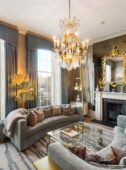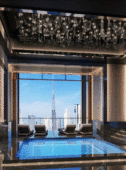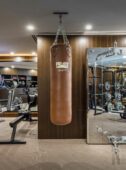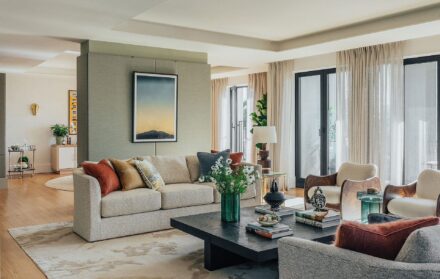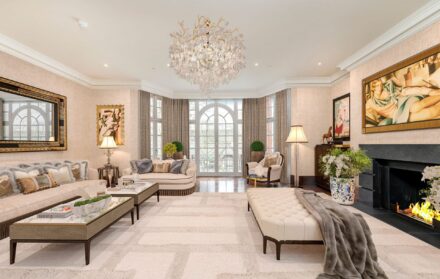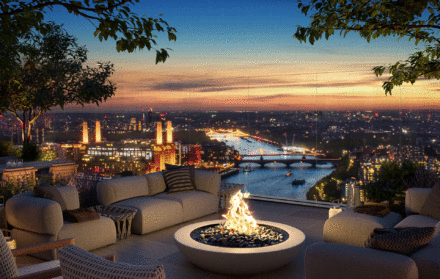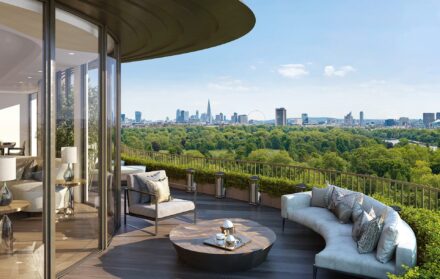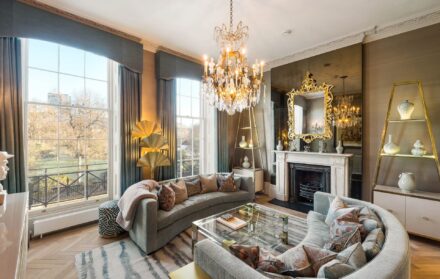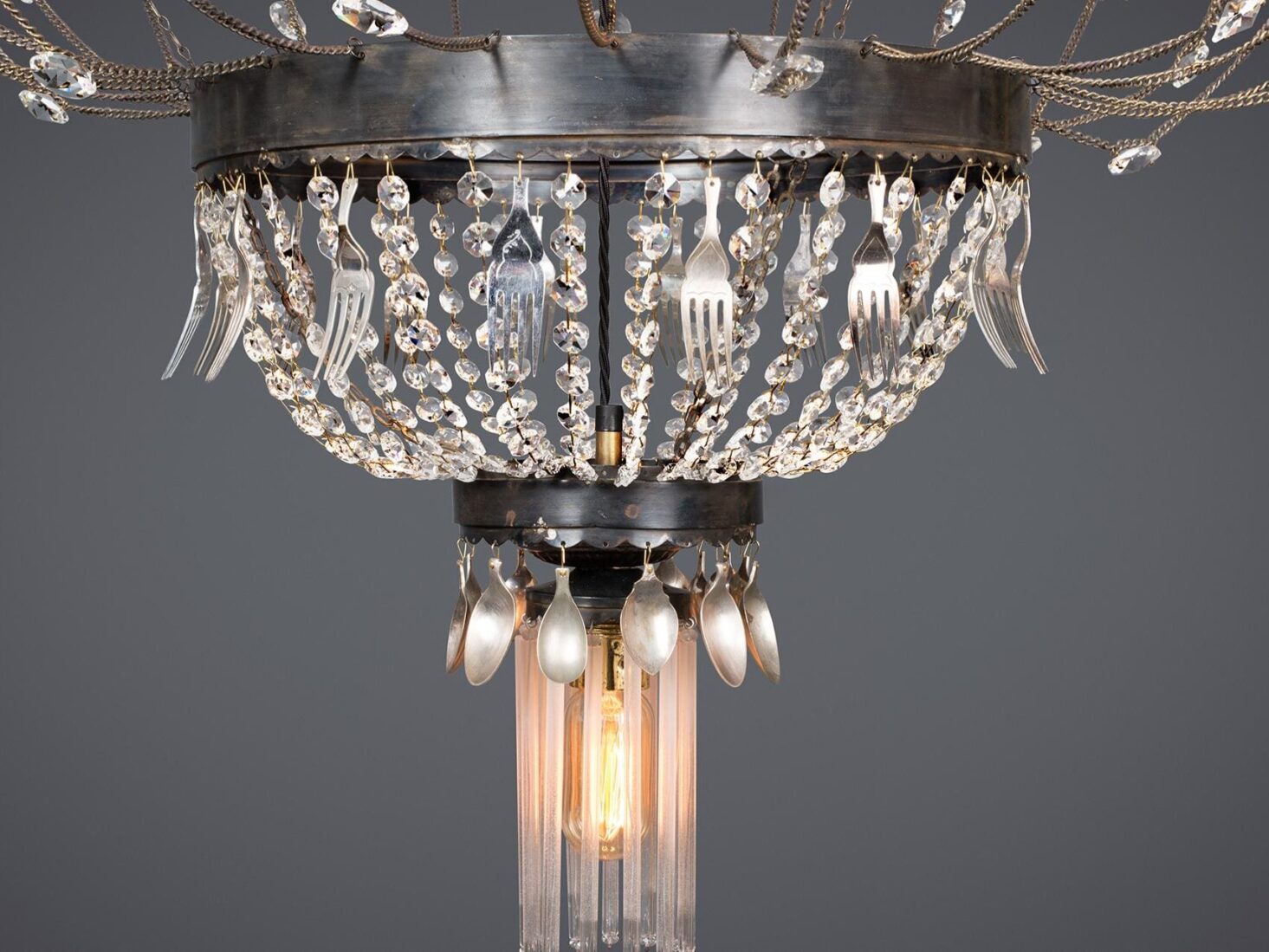
Trip the Light Fantastic: Bespoke Chandeliers Made in London
The rest of the world is waking up to Fiona's way of working, in terms of finding an innovative new use for otherwise discarded objects
Tucked away at the end of an alleyway in Bow, East London, is a workshop. It’s housed in an old Victorian warehouse where brazing torches are blazing and axel grinders grinding as kitsch decanters, crystal beads and miniature magnifying glasses are transformed into unique pieces of art. Opulent chandeliers in varying stages of design, made from glass, wire and sparkling vintage diamante pieces, twinkle in the light. These magical pieces of art happen to have a practical purpose; they are designed to serve as lighting too.
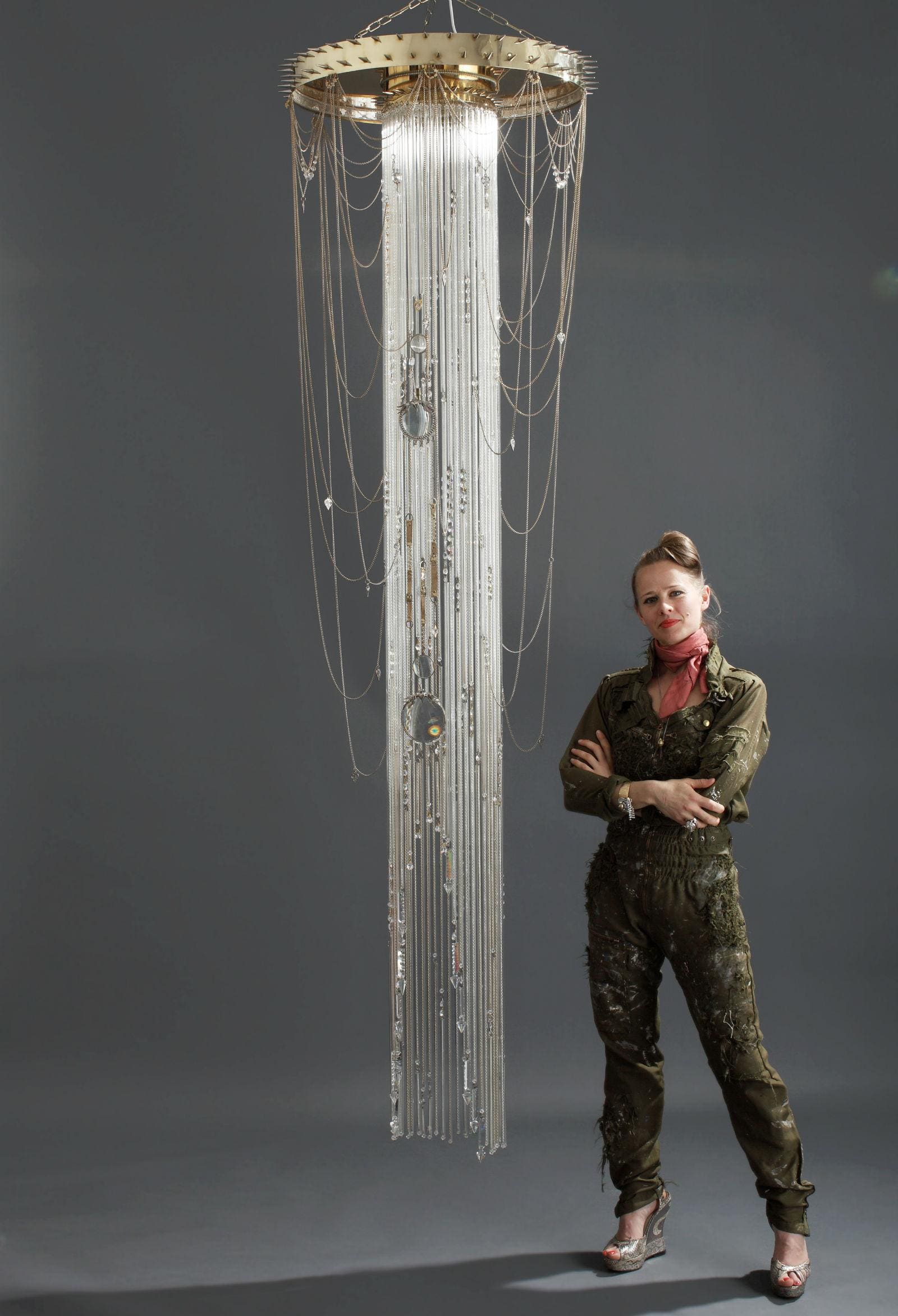
This lighting and chandelier studio is Fiona Gall’s domain, and where Emerald Faerie designs have been brought to life for nearly two decades. In her childhood, Fiona was fascinated by Victoriana, botanical pen and ink drawings, the magical children’s book illustrations of Arthur Rackham and curios squirrelled from jumble and car boot sales. She takes a “magpie-like delight in trash, treasure and found objects” – and, in fact, it has never before been more on-trend than to give a discarded item a second life. Fiona tells us more about her fantastical creations.
How did you choose the name Emerald Faerie?It came from my interest in mythology and legends. That’s where the old spelling comes from. Not twee little fairies – the whole world of faeries, witches and dragons etcetera. Emerald green is my favourite colour and it had a nice ring to it. Absinthe was also once nicknamed the ‘Green Fairy’ because of its wormwood ingredient.
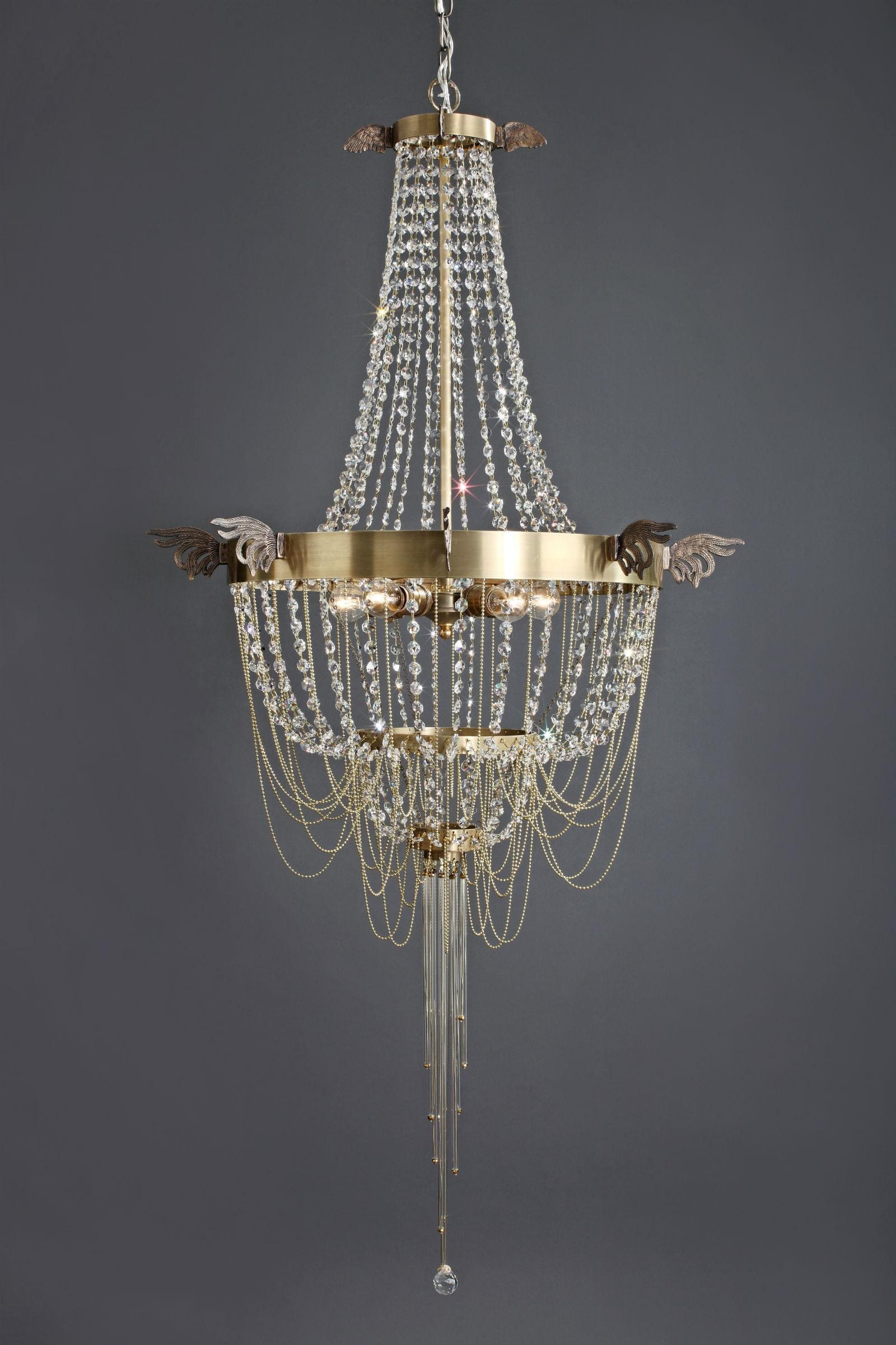
Do you think the rest of the world is waking up to the way of working you’ve forged for decades, in terms of reusing otherwise discarded objects?Definitely. People are seeing the potential in things to become something else. I’m not transforming any objects into a new material but I am transforming their use. I really like this element and more and more people are interested in this.
How much of your output is bespoke commissions?The majority. A recent project went to America – a massive vine chandelier that only just fit through the doors – and all the framework and crystals were new, but for the flowers I used glass from 1970s vases. Charity shops, car book sales and antique markets are fantastic for finding these types of things. People say ‘that’s a lovely vase’ and I think: I shouldn’t tell them I’m going to smash it up and turn it into flowers!
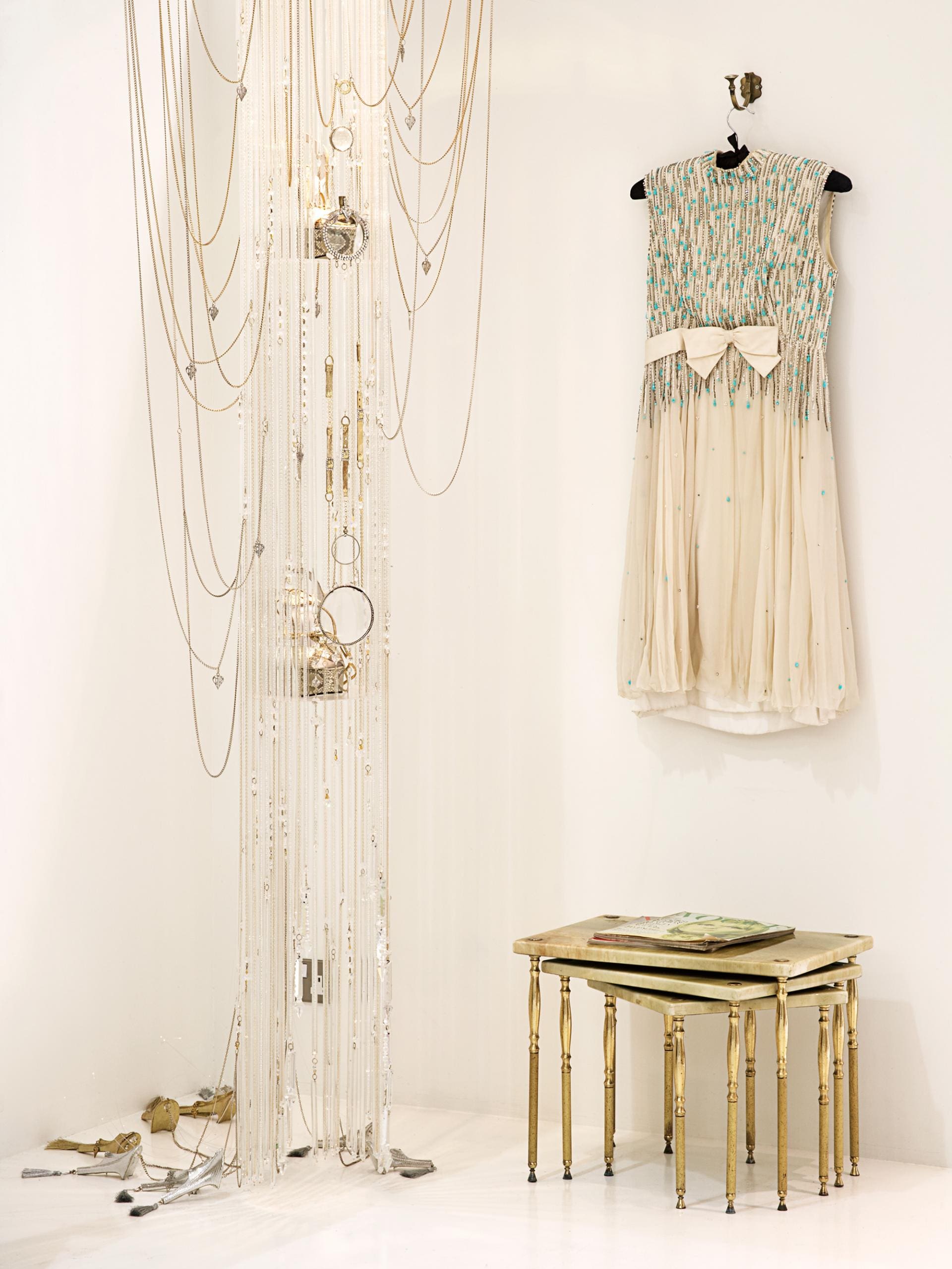
What’s the most unusual commission you’ve done?Coventry Transport Museum. The inspiration came from a scene at Burning Man [Festival] where artists transform cars into new creations – they wanted artists to make something out of a car. I didn’t want to use a whole car so I made a chandelier from parts, although this wasn’t immediately obvious. I would have liked to keep it but I don’t have enough space! It was really fun and gave me the chance to explore using some new materials.
Where in London inspires you?Tower Hamlets Cemetery. It’s a secret place that has been turned into a nature reserve, and it’s really beautiful, with lots of birds and flowers. It’s a great place to be inspired by nature and take time out. The interior of Tate Britain is also inspiring. I like Regent’s Park for all the roses and formal gardens there.
What can potential customers expect from the bespoke process?We’d have an initial chat and they could come to the studio where we can talk through what they’re interested in. I’d arrange a site visit and we’d discuss the potential of their space, then I’d do more drawings. We’d come to a final design and then the work starts. It always comes out better if the customer is prepared to allow the idea to develop as it’s being made because you can’t always draw exactly what the end result will look like.
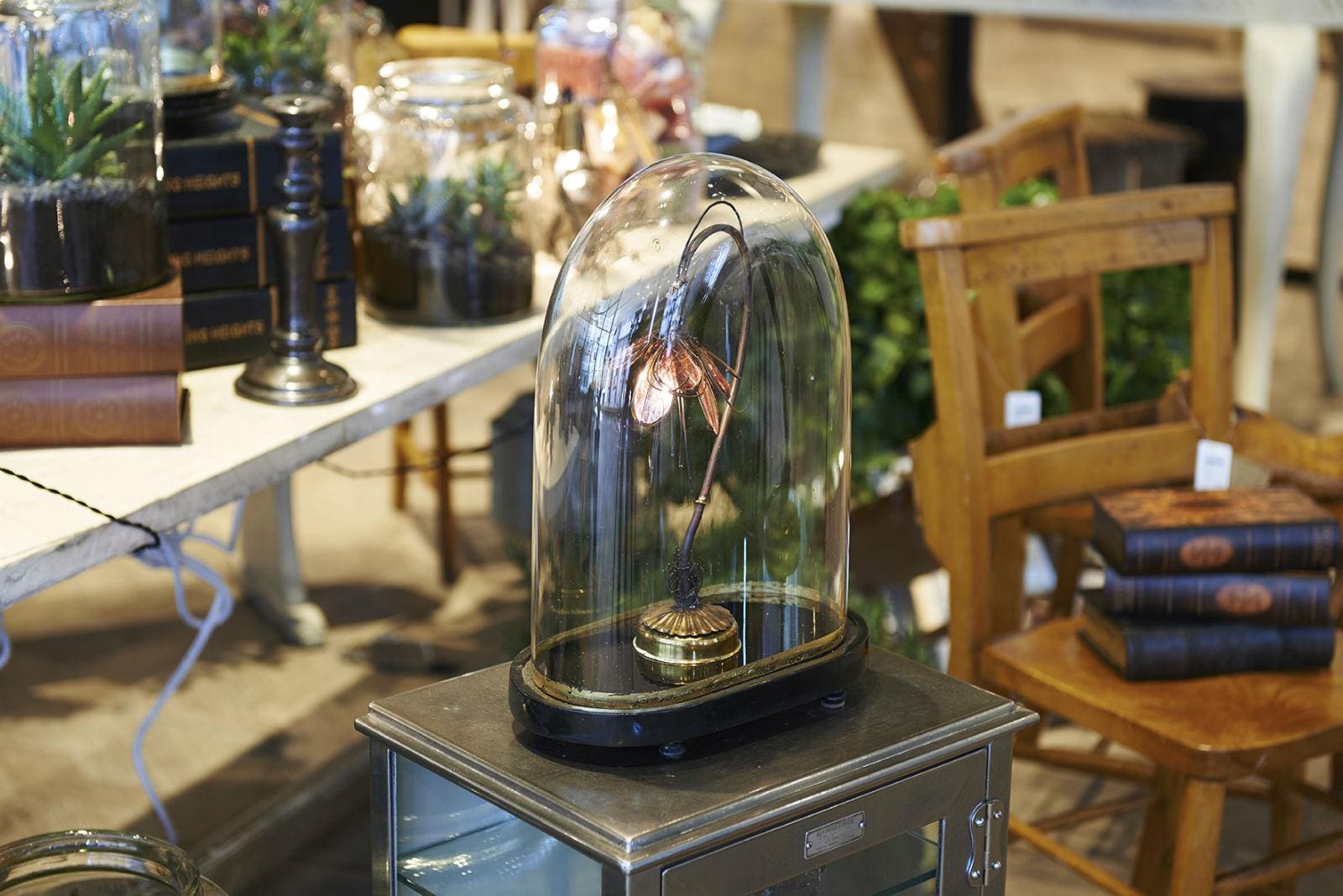
Tell us about your favourite collaborations:One of my favourites was with Terry de Havilland – Cinderella’s Revenge. I approached him, just because I have a big collection of his shoes! He’s such a lovely guy. I took inspiration from his ethos and his shoes. I went to his workshop and looked through all the elements and fabrics he was using, and even the metalwork in the shoes. I thought: why not make the chandelier a stage for the shoe?
Lane Crawford recently invited me over to Hong Kong too, to rifle through its warehouse of discarded items from the Visual Merchandising department with a view to creating something new onsite from its ‘rubbish’. The theme was botanicals. I created new pieces that ended up being sold and also used within the VM department.
The Triffid light – a delicate still life flower encased in a glass dome – is one of your most distinctive pieces. What’s special about it to you? They create their own little ambience because the colours from the flowers reflect light paintings on the wall. They’re completely handmade, with antique glass domes. I love the detail, and I was inspired by nature and by the pen and ink drawings that I loved during my childhood.
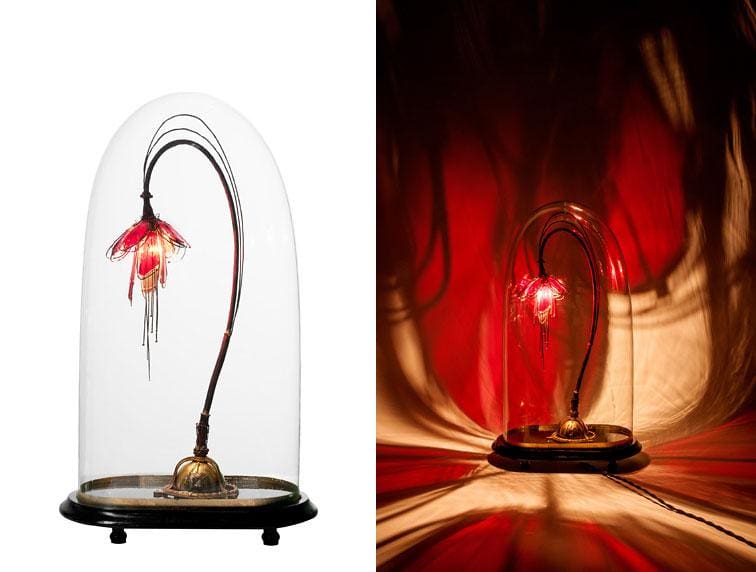
Has our approach to lighting changed since you started?Massively. Instead of being the last thing, now it is part of the whole [interior design] process. It can totally transform a space and lighting has so much potential to be sculptural, rather than just being a light!
